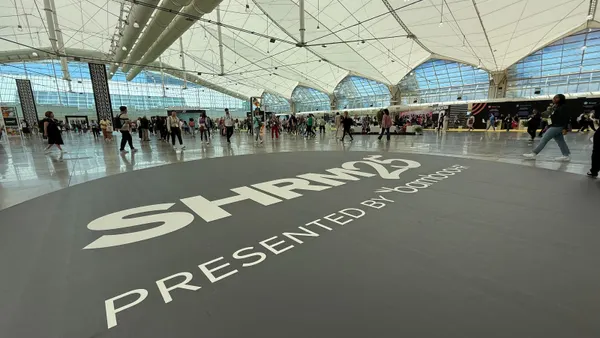The introduction of a $100,000 annual fee for new H-1B visas has left many in the US fearing a talent crisis. For decades, the H-1B has been a life-line for companies seeking hard-to-find skills. Now, with immigration rules shifting overnight, employers are left wondering what to do next.
One thing the change undoubtedly shows is that visa-dependent hiring strategies may be increasingly fragile. But rather than a moment for panic, this is instead an opportunity to ask a deeper question: What does a more resilient global hiring model look like?
The bigger picture
The visa changes come at a time when talent demand is accelerating out of step with supply. The widespread adoption of AI, in particular, is driving businesses to hunt for increasingly specialized skills. Immigration systems built for a different era aren’t keeping up. By 2026, an IT skills crisis is predicted to affect more than 90% of organizations worldwide, causing $5.5 trillion of revenue loss.
Businesses simply aren’t able to hire the talent they need, and the new H-1B fee makes that even clearer. Visas, in particular, leaves companies exposed to shifting policies that are political, unstable and costly.
Emerging paths forward
So how do companies respond? One way is simply absorbing the cost. Some enterprises will continue to pay for relocation, but they may think twice about using the option for less high-value roles. Even for the likes of Amazon, which had 12,391 visa beneficiaries approved in 2025, the costs could add up.
“Historically, visa costs have been absorbed as a compliance expense, but this sudden escalation fundamentally changes the cost-benefit equation for employers,” says Sonam Haider, Director of Global Mobility for global employment firm Multiplier.
Another option is to incorporate elsewhere. Locations like the United Kingdom, China and Germany have relaxed visa fees and rules in an effort to attract global talent, some in direct response to the change in the US policy. Those moves mean businesses with local entities will find it easier to bring workers over.
Both approaches are valid, but they also mean the core vulnerability is left unaddressed. Future policy changes could rapidly affect the status of workers on visas, leaving businesses scrambling for workarounds. A more agile method is to instead hire talent where they already are. Rather than moving people to opportunity, companies are increasingly moving opportunity to people.
The rise of distributed hiring
Even as physical borders tighten, digital borders have dissolved. Remote work has normalized collaboration across geographies. The need to set up slow, expensive entities in foreign countries just to hire workers has vanished with the rise of Employers of Record (EORs), platforms which employ workers on behalf of other companies. Distributed teams are now not just possible, but highly effective.
Hiring talent where they are boosts resilience and agility by allowing companies to bypass visa bottlenecks and avoid the operational paralysis that policy swings create. By making distributed hiring viable at scale for businesses of all sizes, EORs are not replacing relocation but enabling a broader shift to a more distributed model.
Workers are catching on to this possibility. While the H-1B once symbolized upward mobility for many people around the world, now more and more talented people are realizing that global careers can be built without leaving their home. The question for businesses is how best to make use of this resource.
How to build beyond borders
A borderless workforce model doesn’t happen by accident. It requires deliberate strategy.
1. Audit for agility
The first step is clarity. Too often, mobility and hiring strategies evolve reactively, shaped by policies rather than by long-term planning. Start by auditing where your current hiring relies most heavily on relocation or visa approvals. Once you map these dependencies, you can explore alternate approaches.
For companies navigating the H-1B upheaval, this shift could “accelerate the normalization of borderless talent,” says Haider. “Immigration is only one tool among many, not the single point of dependency it once was.”
2. Pilot distributed models
Distributed hiring doesn’t have to mean dismantling existing mobility programs or abandoning relocation altogether. It can start small, with a single hire in a new market.
One of the advantages of using an EOR is the ability to pilot quickly. Instead of setting up a legal entity and staffing an entire office to justify the overhead, companies can compliantly hire one engineer in Vietnam, one product manager in Poland or one designer in Brazil, and see how those roles integrate with existing teams.
3. Future-proof talent
Finally, resilience comes from recognizing that policy is not fixed, but rather a variable subject to disruption, litigation and politics. Companies must plan with this variability in mind. What happens if visa access narrows in a key territory? Are there alternative hubs ready to absorb demand? How can distributed teams ensure continuous service without disruption?
By carrying out contingency planning exercises and ensuring systems and workflows are remote-ready, businesses will ensure they have the answers to these questions.
“Building flexibility into mobility and workforce strategies balancing onsite, offshore and remote-first approaches will help firms remain agile and competitive in the face of shifting policies,” says Haider.
The age of resilience
The introduction of a $100,000 H-1B fee is unprecedented, but it is not the end of global mobility. Rather, it is a prompt for businesses to modernize, diversify and reinforce their workforce strategy.
The world’s best talent is still within easy reach, provided companies embrace a more distributed model. Companies that continue to view immigration as a fixed pathway will remain vulnerable. Those that embrace borderless hiring have an opportunity, not only to weather this moment, but to lead the next era of global work.










